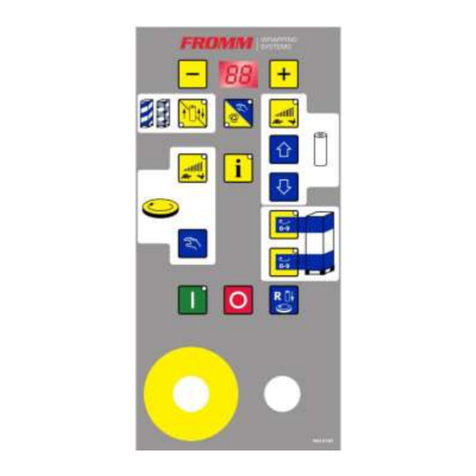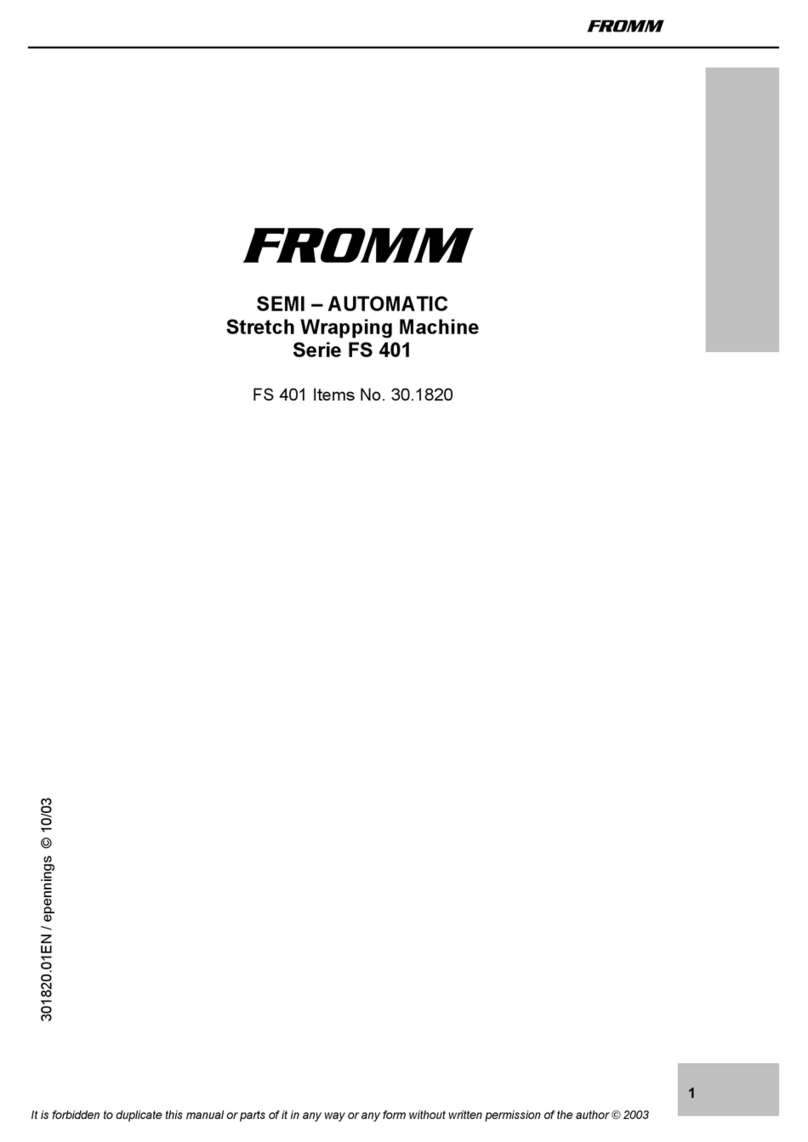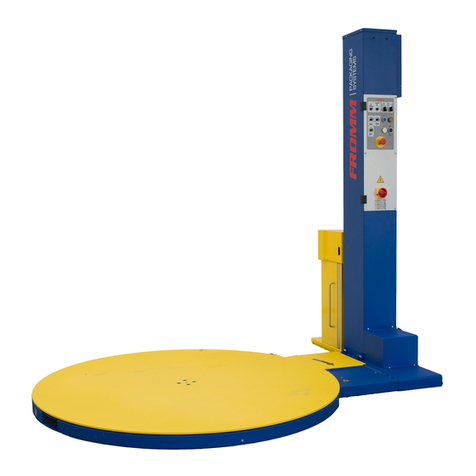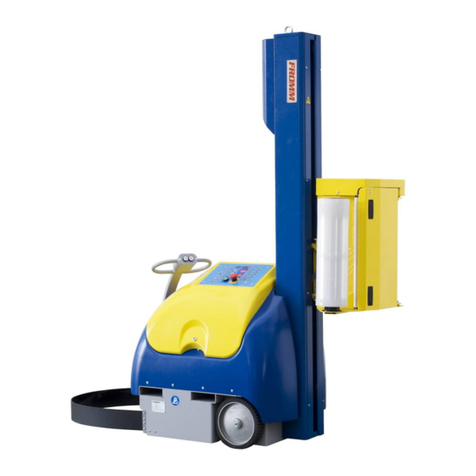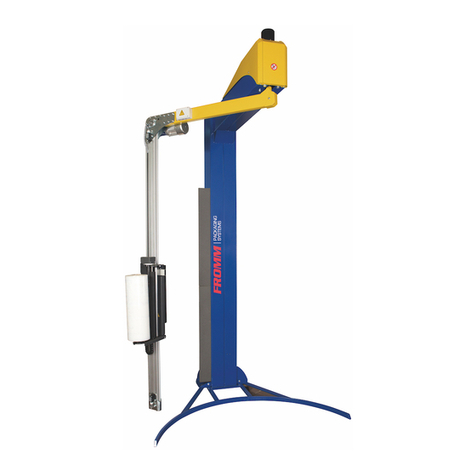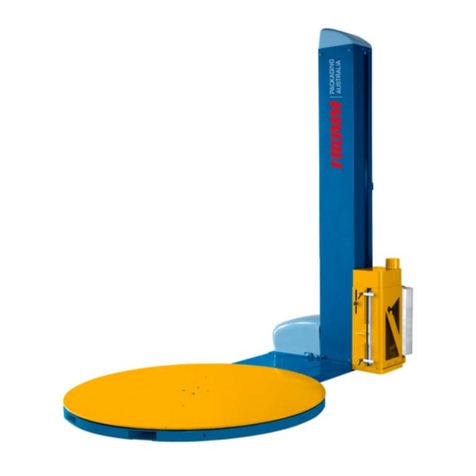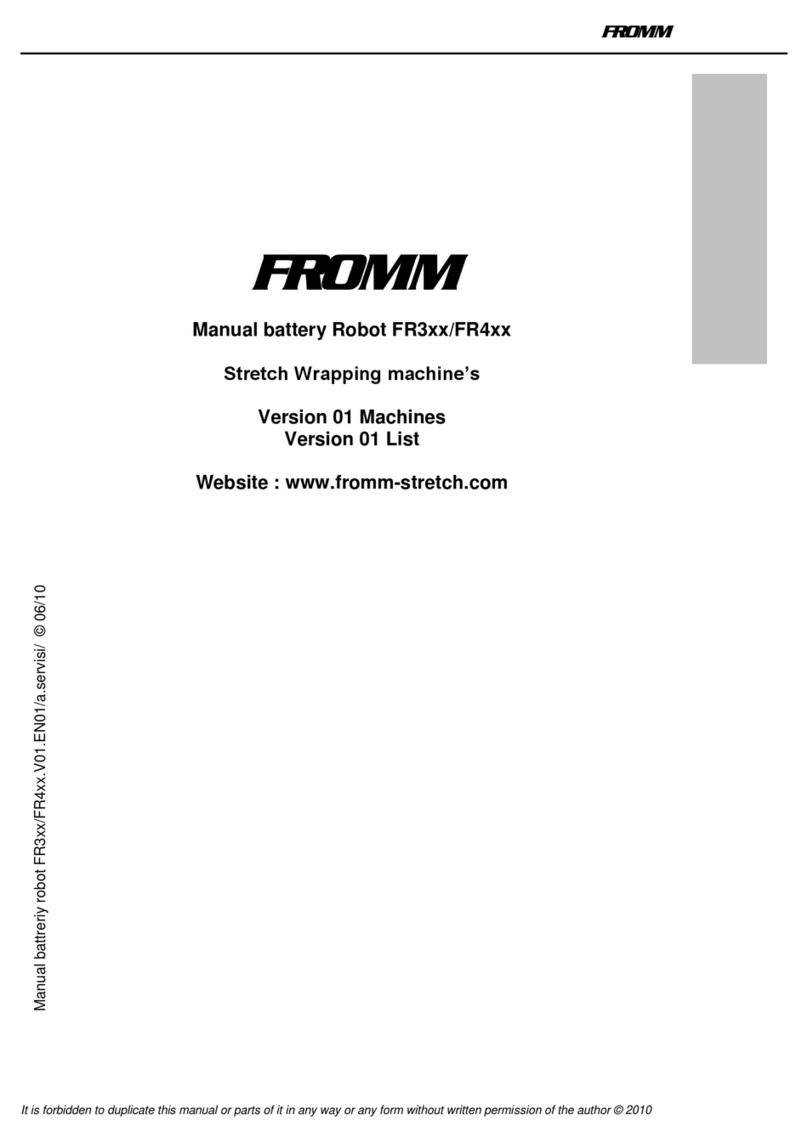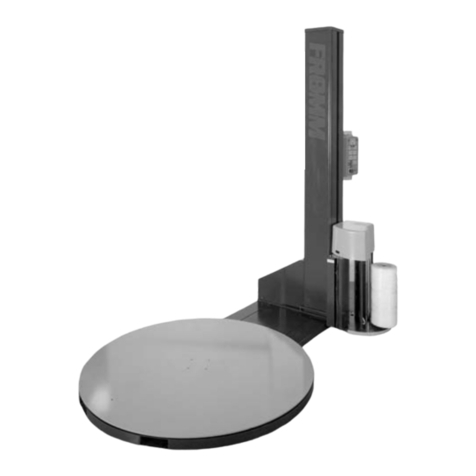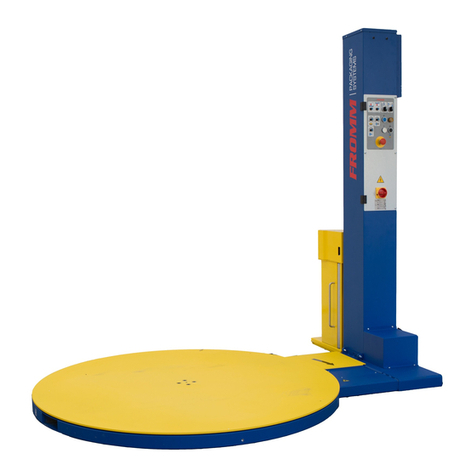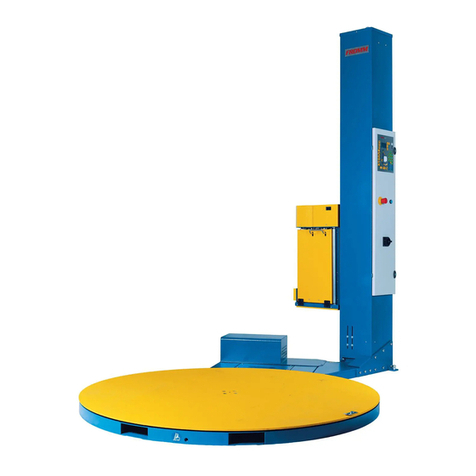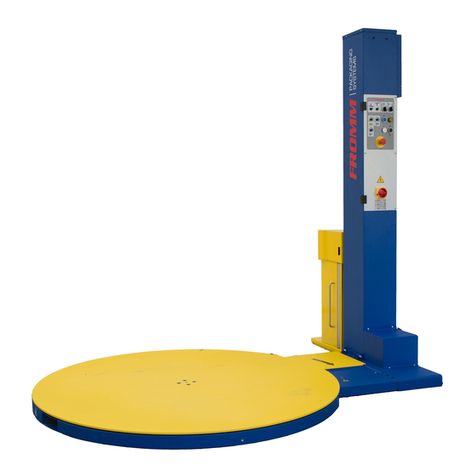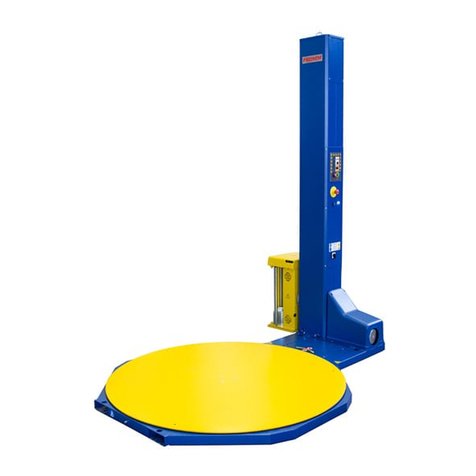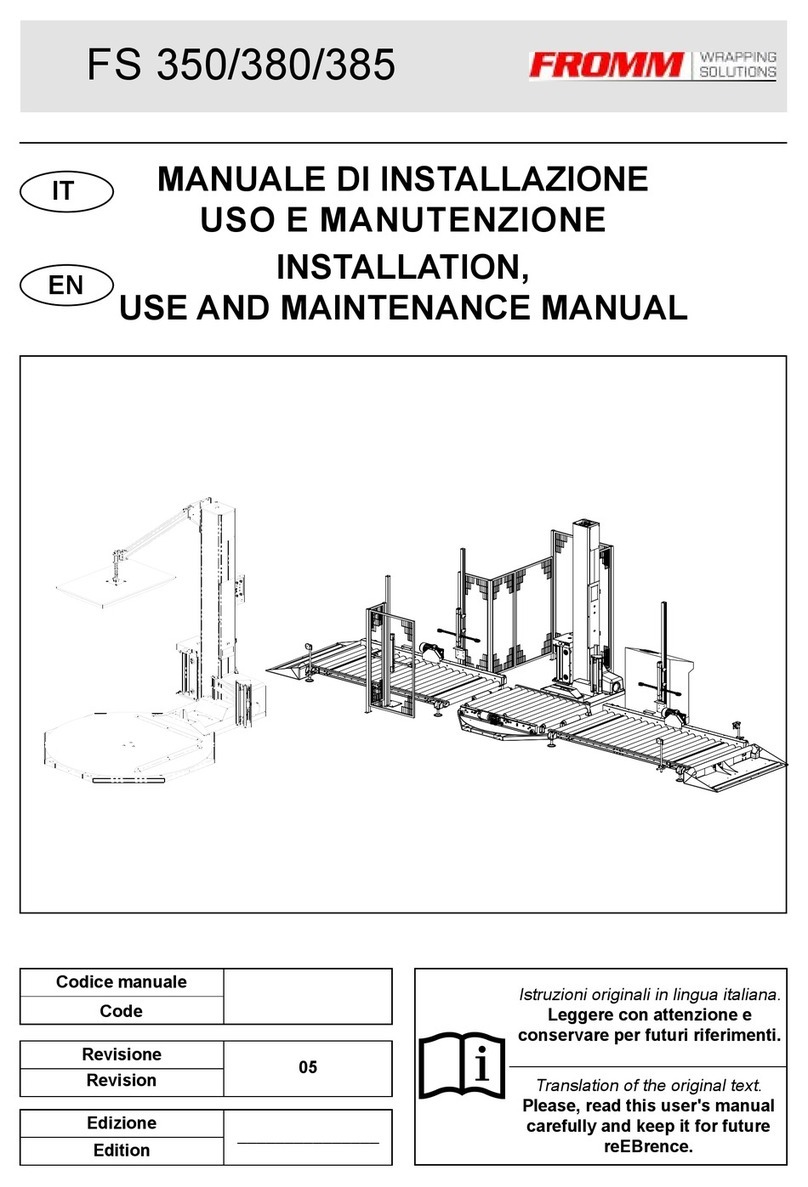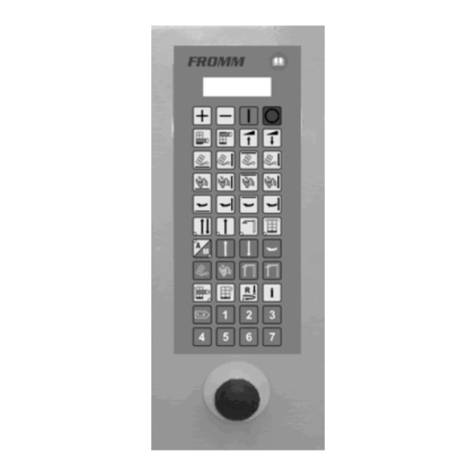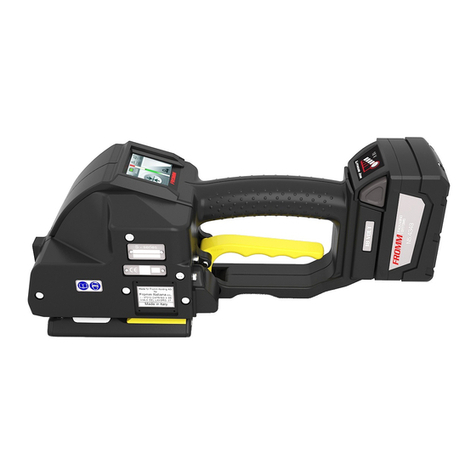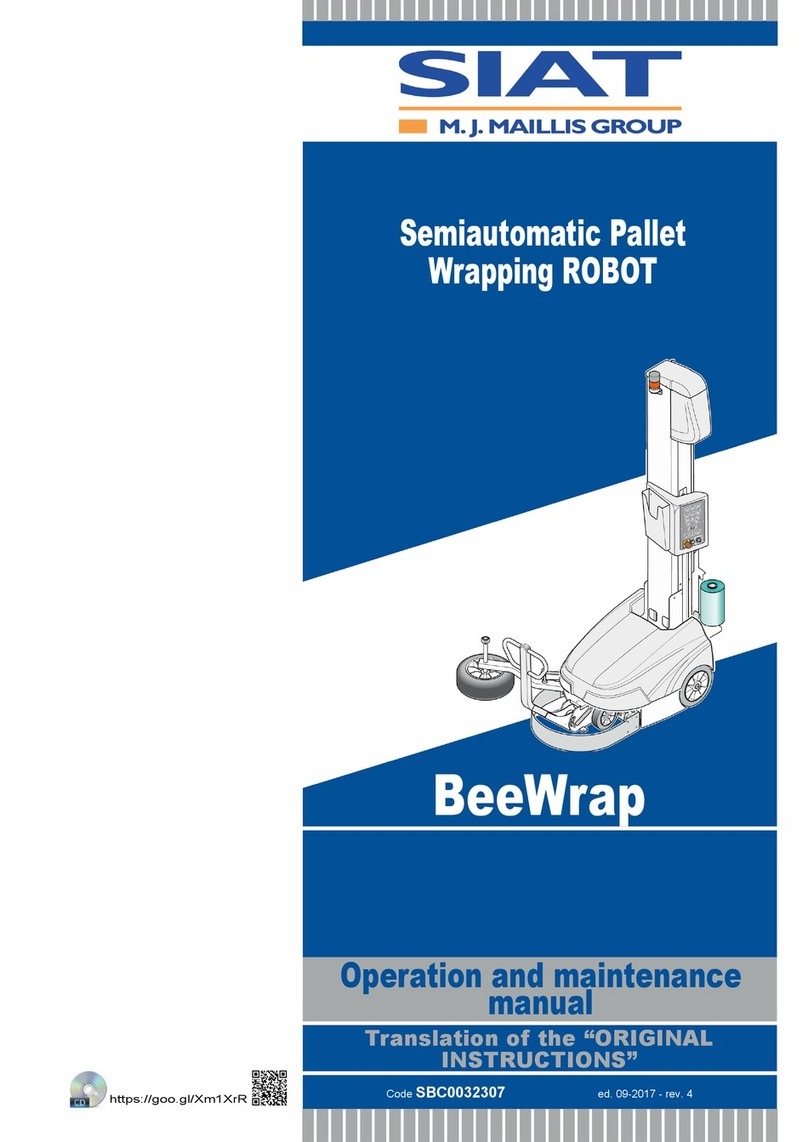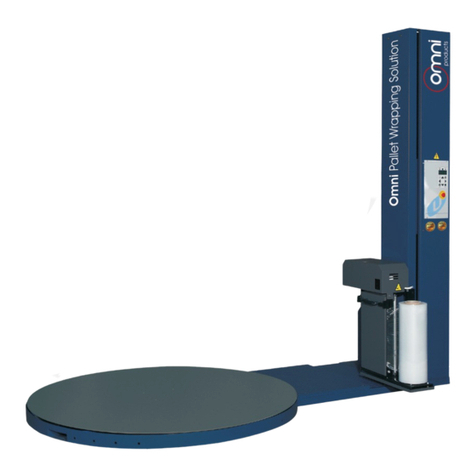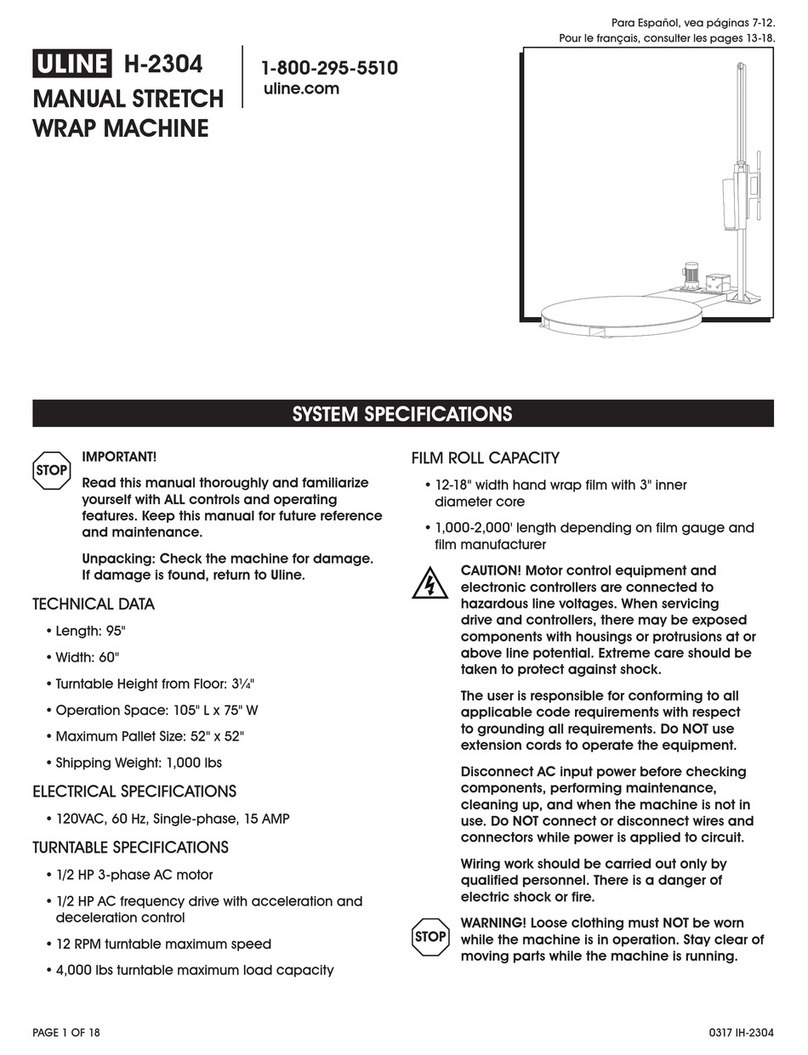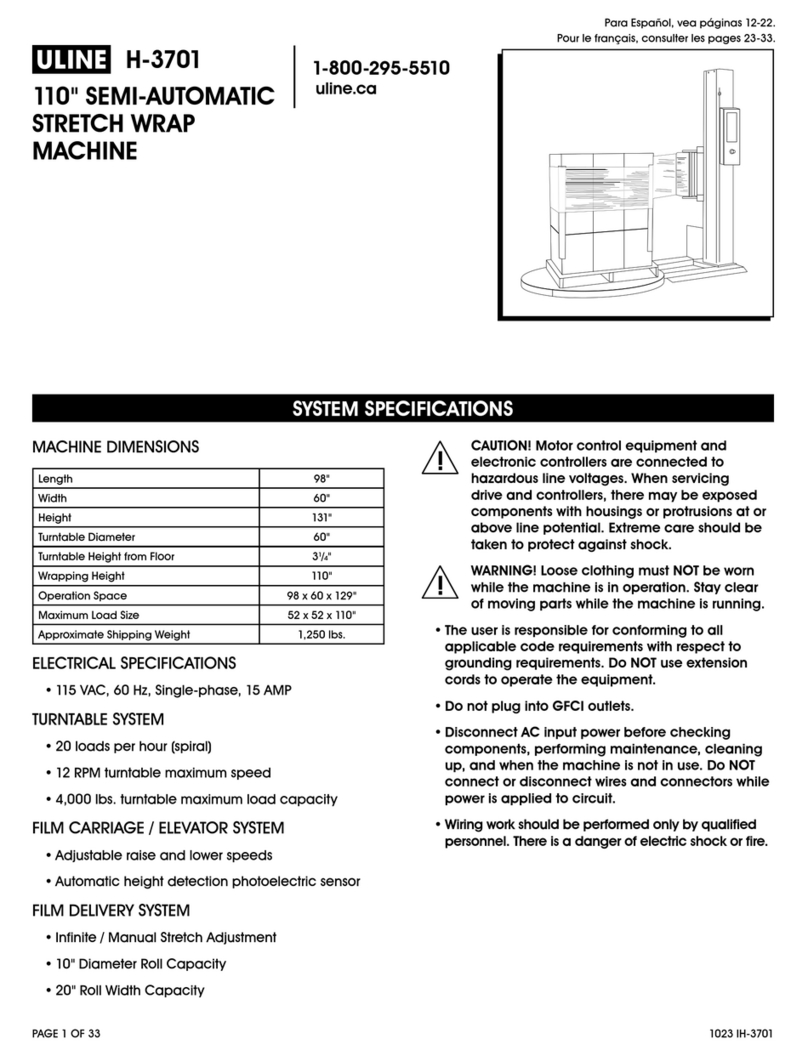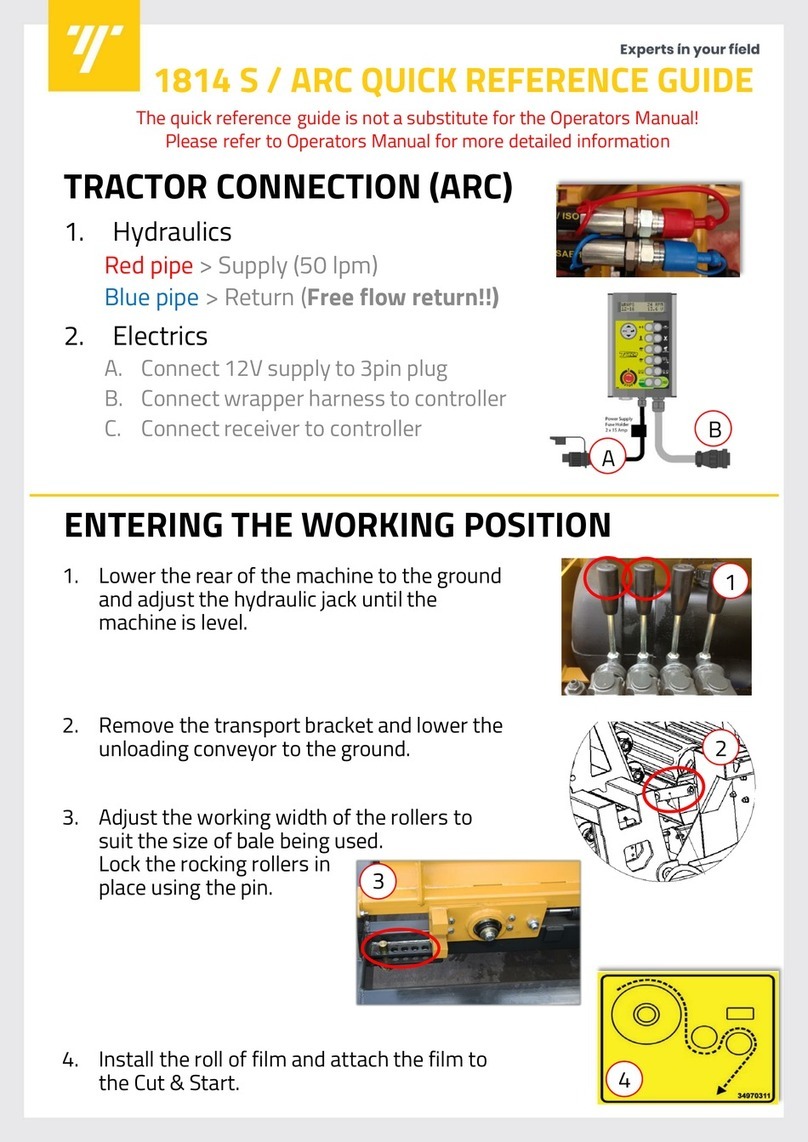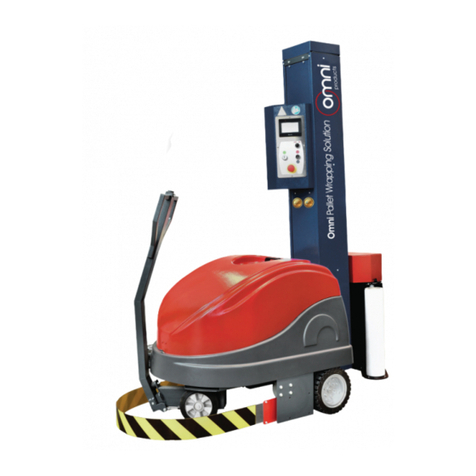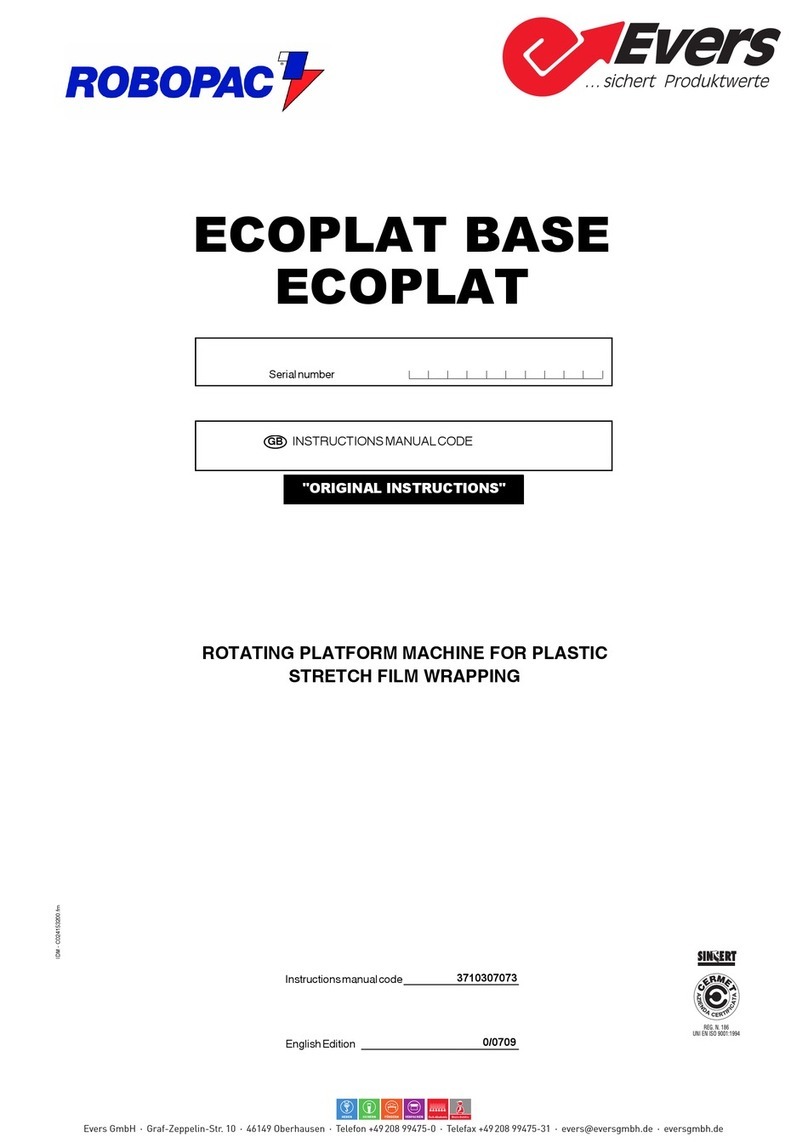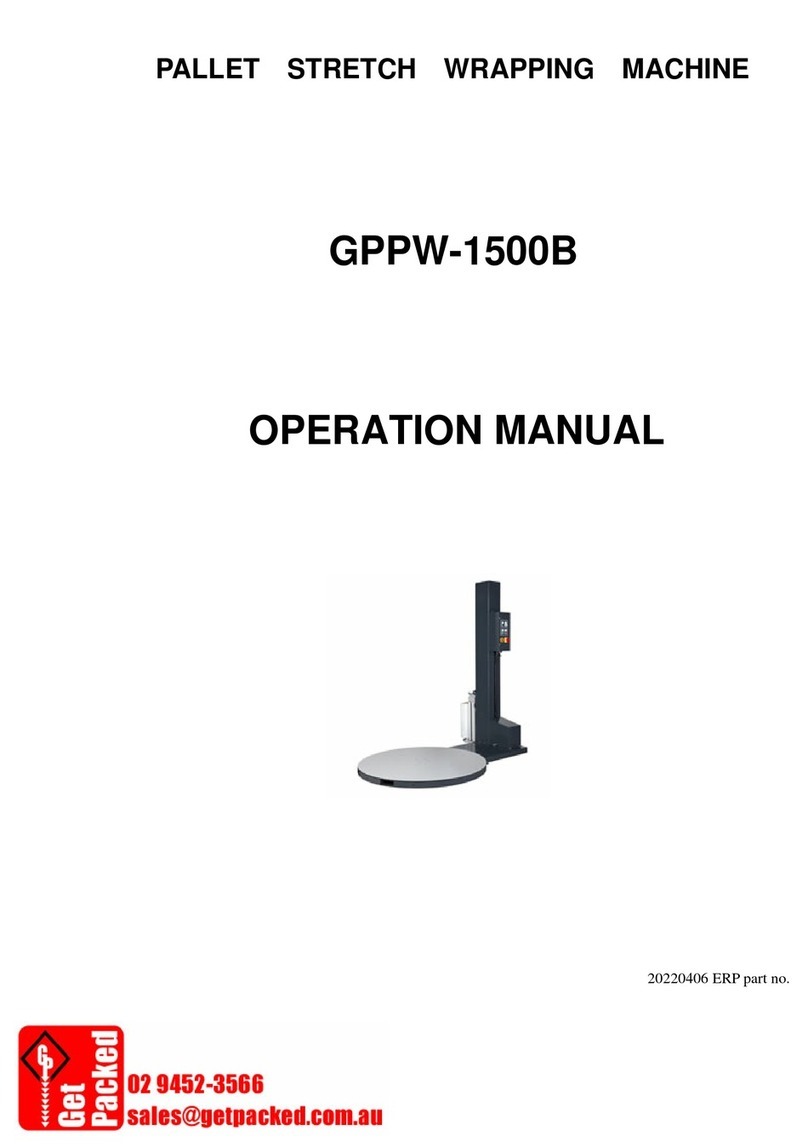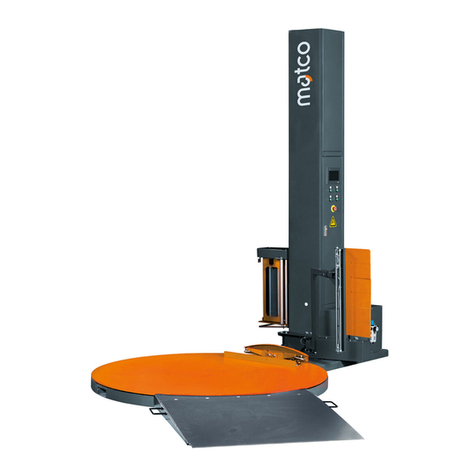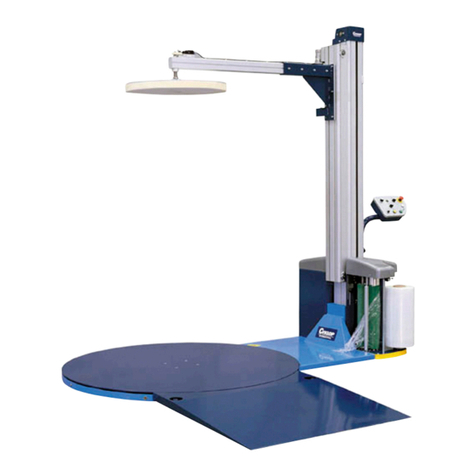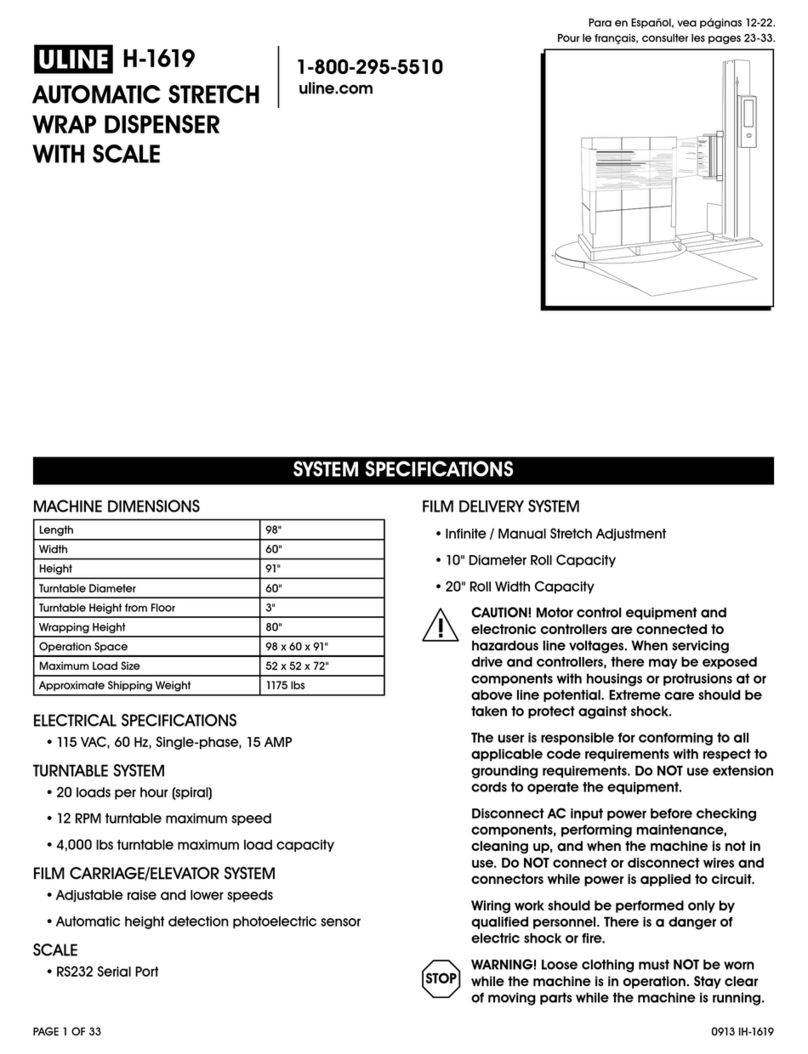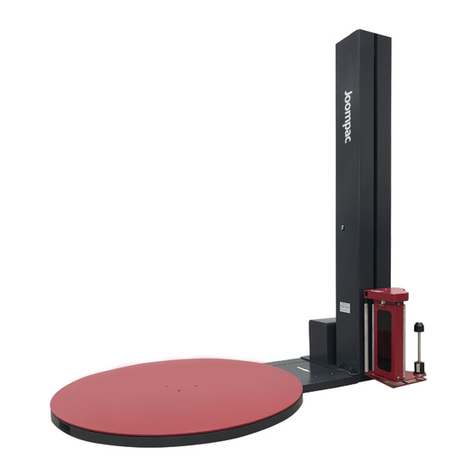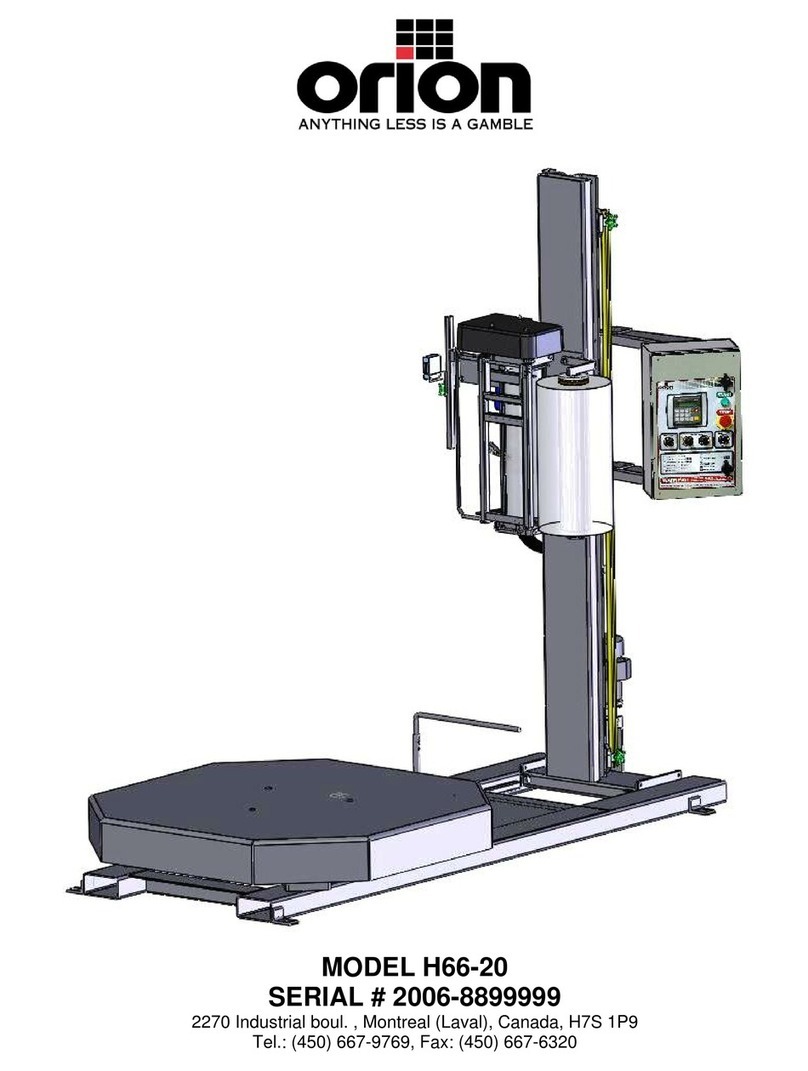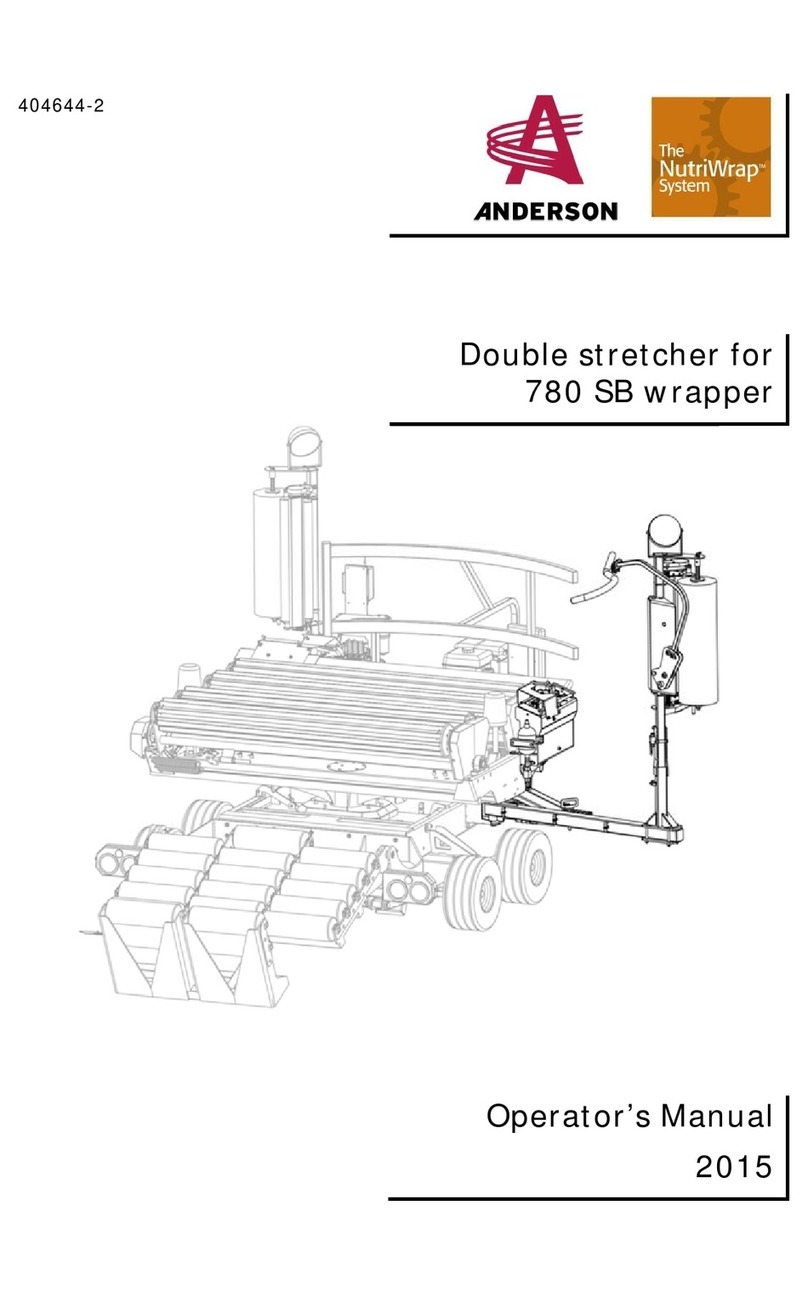
8
1. SICUREZZA E ANTINFORTISTICA
1.1 AVVERTENZE GENERALI DI SICUREZZA
• Prima di iniziare il lavoro l'operatore deve
essere perfettamente a conoscenza della posizio-
ne e del funzionamento di tutti i comandi e delle
caratteristiche della macchina; vericare quotidia-
namente tutti i dispositivi di sicurezza presenti sulla
macchina.
• L'operatore, prima di procedere alla par-
tenza del ciclo di lavorazione, deve assicurarsi
dell'assenza di PERSONE ESPOSTE nelle ZONE
PERICOLOSE.
• Il datore di lavoro deve disporre e fare im-
piegare dispositivi di protezione individuale confor-
memente a quanto indicato sulla Direttiva 89/391/
CEE (e successive modiche). Durante l’uso e la
manutenzione della macchina è Obbligatorio l'uso
di dispositivi di protezione individuale (DPI) quali
calzature e tuta di sicurezza, approvati per ni
antinfortunistici.
• Le zone di stazionamento dell'operatore
vanno mantenute sempre sgombre e pulite da
eventuali residui oleosi.
• E' vietato avvicinarsi agli elementi mobili
della macchina, quali carrello e braccio rotante,
quando la macchina è in lavorazione.
• E' assolutamente vietato far funzionare la
macchina in modo automatico con le protezioni
sse e/o mobili smontate.
• E' assolutamente vietato inibire le sicurezze
installate sulla macchina.
• Le operazioni di regolazione a sicurezze ri-
dotte devono essere effettuate da una sola persona
e durante il loro svolgimento è necessario vietare
l'accesso alla macchina a persone non autorizzate.
• Il locale di installazione della macchina non
deve avere zoned'ombra, luci abbaglianti fastidiose,
nè effetti stroboscopici pericolosi dovuti all'illumi-
nazione fornita.
• La macchina può lavorare in aria libera a
temperature ambientali da + 5°C a + 40°C.
• La macchina deve essere usata esclusiva-
mente da personale qualicato.
LA MACCHINA DEVE ESSERE UTILIZ-
ZATA DA UN UNICO OPERATORE ALLA
VOLTA, VI E' IL DIVIETO ASSOLUTO DI
OPERARE CONTEMPORANEAMENTE
IN PIù DI UN OPERATORE.
1. SAFETY AND ACCIDENT
PREVENTION
1.1 GENERAL SAFETY INSTRUCTIONS
• Before starting work, the operator must be per-
fectly familiar with the position and functioning
of all the controls and machine features. Daily
check all the safety devices on the machine.
• Before starting the working cycle, the operator must
ensure that there are no EXPOSED PERSONS in
the HAZARDOUS ZONES.
• The employer must provide and instigate the use
of personal protective equipment conforming to
the prescriptions of Directive 89/391/EEC(and
subsequent revisions). While using and carry-
ing out maintenance on the machine the use
of personal protective equipment (PPE) such
as safety footwear and overalls, approved for
accident prevention, is obligatory.
• The areaswhere theoperator stands must always
be kept clear and free of oily residues.
• It is forbidden to approach the machine moving
parts, such as the carriage and rotating arm,
while the machine is running.
• It is strictly prohibited to operate the machine
in automatic mode with the xed and/or mobile
safety guards removed.
• It is strictlyprohibited to disablethe safety devices
installed on the machine.
• Any adjustment operations that need to be car-
ried out with some of the safety devices disabled
must be performed by one person only, and un-
authorised persons may not access the machine
during this time.
• The room in which the machine is housed must
not have any shadow areas, annoying bright
lights or hazardous stroboscopic effects caused
by the lighting supplied.
• The machine can operate in clear air conditions
at ambient temperatures of +5°C to +40°C.
• The machine must be used exclusively by
qualied personnel.
THEMACHINE MUSTONLYBE USEDBY
ONEOPERATORATATIME, USEOFTHE
MACHINE BY 2 OR MORE OPERATORS
AT THE SAME TIME IS FORBIDDEN.
